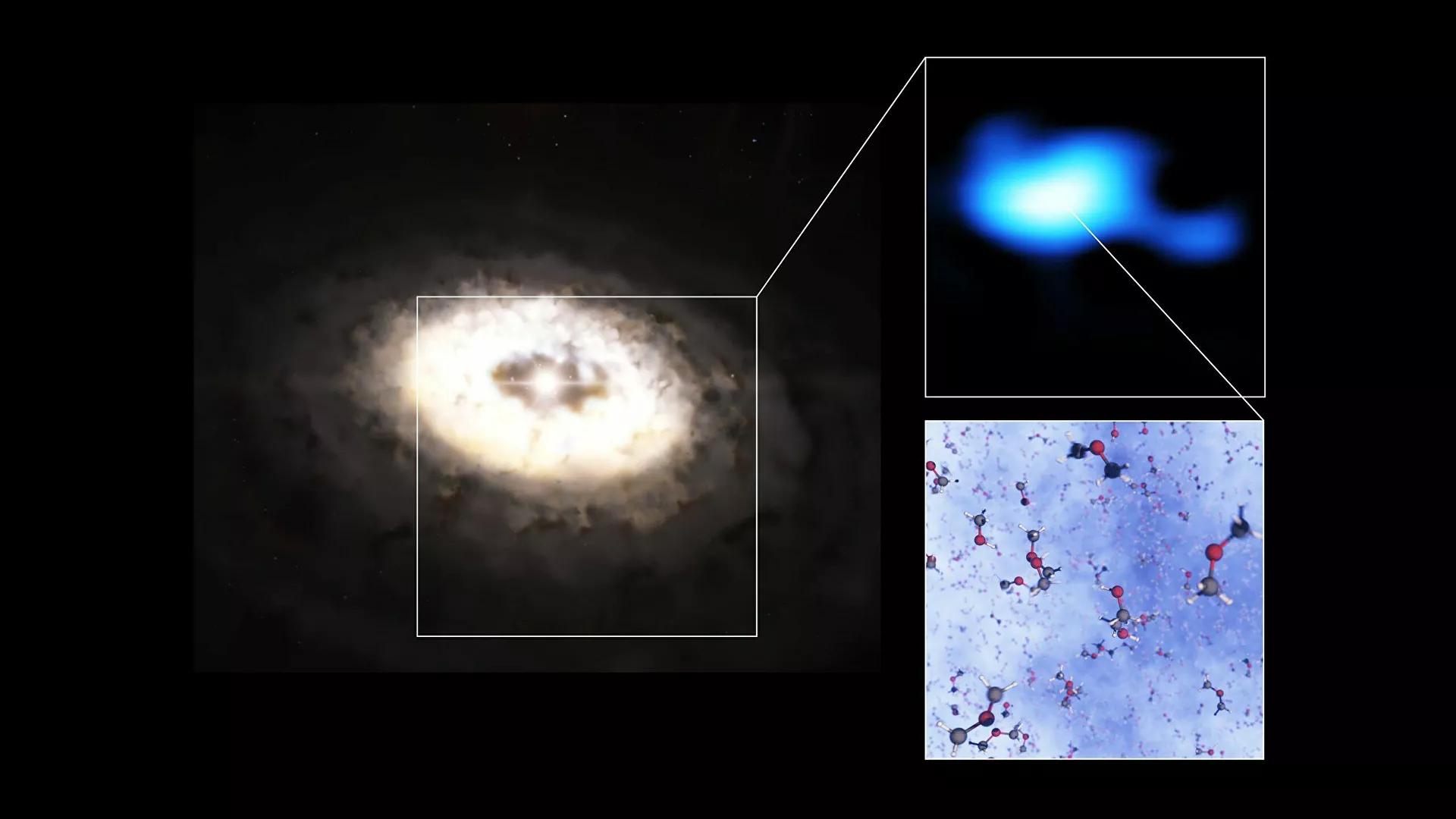Africa-Press – Liberia. The largest molecule yet identified, dimethyl ether, is a common chemical compound in star-forming clouds, but has never before been discovered in a planet-forming disc. Many complex chemical compounds, including dimethyl ether, are believed to develop in star-forming clouds prior to the birth of the stars.
Researchers at the Leiden Observatory in the Netherlands using the Atacama Large Millimeter/submillimeter Array (ALMA) in Chile have for the first time found dimethyl ether in a planet-forming disc, according to a new study published in the journal Astronomy & Astrophysics said.
According to the research, this is the largest molecule found in such a disc to date, with nine atoms. It’s also a precursor to larger organic compounds, which could lead to the creation of life.
The researchers also detected methyl formate, a complex chemical that is a building component for larger organic compounds, similar to dimethyl ether.
And according to SciTechDaily, with the help of ALMA, an observatory co-owned by the European Southern Observatory, the molecules were discovered in the planet-forming disc surrounding the young star IRS 48 (also known as Oph-IRS 48), within the in the constellation of Ophiuchus.
Because its disc contains an asymmetric, cashew-nut-shaped “dust trap,” IRS 48, situated 444 light-years from Ophiuchus, has reportedly been the subject of multiple research programs.
This region, which is thought to have formed as a result of a newly-born planet or small companion star passing between the star and the dust trap, holds a large number of millimeter-sized dust grains that can collide and grow into kilometer-sized objects like comets, asteroids, and possibly even planets.
Atoms and basic molecules like carbon monoxide adhere to dust grains in these freezing conditions, generating an ice coating and performing chemical reactions that result in more complex molecules, according to the study.
Researchers have revealed that the IRS 48 disc’s dust trap is actually an ice reservoir, including dust grains wrapped in complex molecule-rich ice. ALMA has detected indications of the dimethyl ether molecule in this part of the disc, as warmth from IRS 48 sublimates the ice into gas, freeing the trapped molecules inherited from the cold clouds.
Dimethyl ether’s discovery hints that many additional complex compounds found in star-forming regions could potentially be hiding on frozen structures in planet-forming discs. These chemicals are reportedly precursors to prebiotic molecules like amino acids and carbohydrates, some of life’s most fundamental building blocks.
Future investigations of IRS 48 using ESO’s Extremely Large Telescope (ELT), presently under construction in Chile and expected to begin operations later this decade, will reportedly allow researchers to investigate the chemistry of the disc’s most inner regions, where planets similar to our Earth may be forming.
Researchers noted that they can learn more about how primordial chemicals end up on planets, including our own, by examining their formation and evolution.
“We are incredibly pleased that we can now start to follow the entire journey of these complex molecules from the clouds that form stars, to planet-forming discs, and to comets. Hopefully, with more observations we can get a step closer to understanding the origin of prebiotic molecules in our own Solar System,” Nienke van der Marel from Leiden Observatory said.
For More News And Analysis About Liberia Follow Africa-Press






